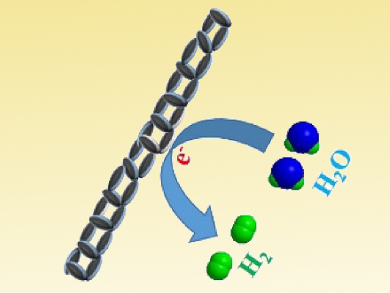Molybdenum carbides (MoCx) are promising noble-metal-free electrocatalysts for the hydrogen evolution reaction (HER). Owing to reactive molybdenum sites, the surface oxidation of MoCx is inevitable under air. However, this phenomenon is ignored, leading to difficulties in the understanding and design of carbide catalysts.
Qingsheng Gao, Jinan University, Guangzhou, China, Xiao-Ming Cao, East China University of Science & Technology, Shanghai, Yi Tang, Fudan University, Shanghai, China, and colleagues have developed a strategy to prepare skeletal MoC “nanoladders” with enriched mesopores (pictured). The nanoladders serve as models to experimentally and theoretically investigate the correlation between surface oxidation and electrocatalysis. The team started from Mo3O11·(C6H10N2)2 nanobelts, which were subjected to pyrolysis under Ar flow. A controlled surface oxidation treatment was then used to precisely modulate the surface oxidation of the resulting nanoladders.
Moderate surface oxidation can notably promote the HER by speeding up the desorption of hydrogen. This is due to a modified electronic structure at Mo and to steric hindrance from the surface oxygen. According to the researchers, this discovery could be useful for developing cost-efficient catalysts via surface engineering.
- Organic−Inorganic-Hybrid-Derived Molybdenum Carbide Nanoladders: Impacts of Surface Oxidation for Hydrogen Evolution Reaction,
Zhangping Shi, Boxu Gao, Qijie Mo, Zheng-Jiang Shao, Kaiqi Nie, Bolun Liu, Hongbin Zhang, Yangxia Wang, Yahong Zhang, Qingsheng Gao, Xuhui Sun, Xiao-Ming Cao, P. Hu, Yi Tang,
ChemNanoMat 2017.
https://doi.org/10.1002/cnma.201700329




